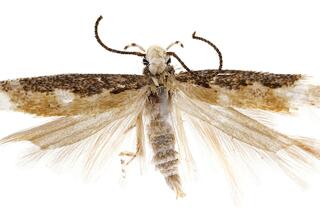Project to Classify Organisms Would Put Life Online
- Share via
SAN FRANCISCO — Kevin Kelly has his work cut out for him.
Not only does he want to discover, describe and catalog every living species on earth, he’d like to make it cool to work in the hitherto sleepy field known as taxonomy.
The co-founder of Wired magazine wants to give each species its own Web page and tap the power of network computing to speed the classification process.
The All Species Foundation, which Kelly helped to launch with $1.2 million in private donations, is hoping the initiative will buff taxonomy’s hoary reputation and attract more people into its ranks.
“It hasn’t been very jazzy,” said ichthyologist Dan Cohen, who has been collecting exotic deep sea fish for 50 years. “There’s an image everybody has of fat guys in shorts running around with butterfly nets.”
There are fewer than 10,000 active taxonomists worldwide, most still using essentially the same techniques that Charles Darwin used.
By any measure, that’s woefully inadequate for collecting, identifying and cataloging the estimated 10 million to 111 million living things still left undiscovered. The shortage is so acute that millions of unidentified specimens languish in museum basements, awaiting examination.
“You don’t have to go out into the woods to find new things,” Kelly said.
In fact, all you have to do is drive a few miles from the All Species’ offices in San Francisco to visit John McCosker, chairman of aquatic biology at the California Academy of Sciences.
Just outside McCosker’s basement office, behind the cafeteria, is a huge room of shelves piled to the ceiling with 250,000 Mason jars. In them are 2.5 million preserved fish collected over the last 150 years.
Thousands of those fish--McCosker doesn’t know exactly how many--are unidentified. Many are undoubtedly new species. But McCosker and his colleagues don’t have the expertise to identify them.
“There may be only one person on earth who can identify some of these,” McCosker said. “And he hasn’t shown up yet.”
The foundation hopes to inspire amateurs and professionals alike to join the field, in part by augmenting the butterfly nets with high-powered computing tools.
One big push is to find three-dimensional imaging programs that taxonomists could use to share detailed images of species in seconds, rather waiting a few days to ship physical specimens. This alone could cut from years to months the time it takes to name a new species, Kelly said.
Another idea: bar codes could replace the handwritten specimen labels most taxonomists still use.
But Cohen, one of 40 scientists advising the All Species Foundation, doesn’t want technology to hinder good taxonomy.
For one thing, he doesn’t want the three-dimensional software to replace the physical specimens that the taxonomists routinely exchange before conclusively identifying a new species. Nothing, he said, can replace touching and observing the actual specimen.
Even All Species supporters question the goal of identifying every living thing within 25 years--a job the foundation estimates will cost $3 billion.
Taxonomists have identified about 1.8 million species, including most mammals and birds. What’s left are millions of fish, insects, fungi and microbes.
“This might work perfectly fine for the higher life forms,” said Carl Woese, a microbiologist at the University of Illinois, Urbana-Champaign, who is not connected with the foundation. “But I don’t see this goal as attainable for the microbial world.”
Taxonomists identify about 15,000 new species a year. At that pace, it will take more than 666 years to catalog 10 million species.
To speed the process, the foundation plans to train amateur taxonomists while supporting professionals with grants. By 2007, the foundation hopes up to 60,000 new species will be identified each year.
That will help scientists better understand ecological relationships, and perhaps save species--including humans--from harm and extinction.
Knowing what lives on earth could also lead to better drugs extracted someday from plants that remain undiscovered.
“We need to describe these things in a hurry,” said Evert Schlinger, an entomologist whose $1-million donation jump-started the foundation.
A self-described “spider-and-fly man,” he manages the Schlinger Foundation, one of taxonomy’s largest supporters.
The foundation, with an endowment of $20 million to $50 million--depending on stock-market conditions--funds four permanent teaching and curator posts related to bug-collecting.
Schlinger’s efforts are the exception in a field mostly ignored by public and private funding agencies. All Species hopes to change that.
“We want to make these guys heroes,” said Ryan Phelan, the All Species foundation’s chief executive.






